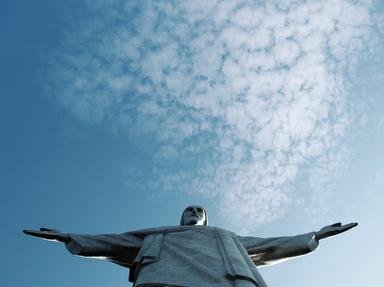Quiz Answer Key and Fun Facts
1. Colombia was - and is - the home of several indigenous groups whose history predates European colonization. Which of these peoples is not native to Colombia?
2. Colombia is named for Saint Columba, patron saint of the Scottish immigrants who originally colonized the area.
3. What legendary "Liberator" of five South American countries led Colombia's fight for independence from 1819 to 1822?
4. In the 1840s, two parties emerged that would dominate Colombian politics into the 21st century. Which two parties were these?
5. Conflict between Colombia's two major parties spilled over into the "Thousand Days War" of 1899-1902. What Colombian province gained its 1903 independence in the war's wake?
6. The carnage of the Thousand Days War was dwarfed by a period called "La Violencia" in the 1940s and '50s where civil violence would claim 300,000 lives. How did Colombia's leaders finally end these conflicts?
7. From the mid-1970s through the end of the twentieth century, the Colombian government faced several violent challenges from various insurgent groups. Which of these was NOT one of them?
8. Though never World Cup champions, the Colombian national team has been a force to be reckoned with in international football (soccer). Hopes were high for the squad going into the 1994 Cup, but they lost their two opening matches and failed to advance to the second round. They lost their first match to Romania; to what football underdog (and 1994 host country) did they lose their second contest?
9. The popular US situation comedy "Modern Family" features one of the best-known Colombian actresses working today. Who is this beautiful performer who so cannily portrays Gloria Delgado-Pritchett?
10. One of the most important scientists of the twenty-first century, Colombian microbiologist Raul Cuero is responsible for some of the most cutting-edge biotechnology of his era. Which of these has he NOT developed?
Source: Author
stuthehistoryguy
This quiz was reviewed by FunTrivia editor
bloomsby before going online.
Any errors found in FunTrivia content are routinely corrected through our feedback system.

